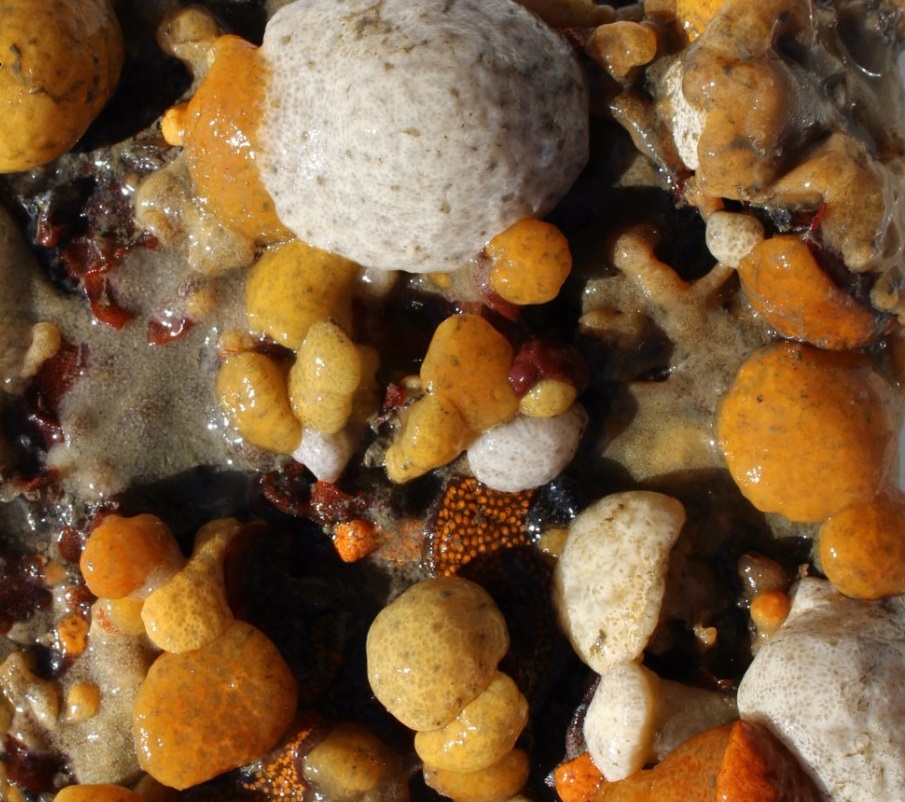Plate Watch
About the Project
Communities that live under docks and ship hulls are known as fouling communities. Fouling communities are composed of many living organisms including invertebrates, algae, and microbes. These organisms live in shallow coastal ecosystems and are vulnerable to changes in salinity and temperature in the water. People also heavily impact fouling communities. Boats, ballast water, and other aquaculture transports and introduces invertebrates to new places. When new species are introduced to an area some of those species may die, but some compete with native fouling organisms for resources. Not all foreign species are invasive, and some get along very well with new neighbors. However, invasive species harm the ecology and the economy of their new environments. People living on the coast spend millions of dollars a year to detect and remove invasive fouling species. By better understanding where and what kinds of fouling organisms live, we can better identify when species are introduced to a new area, and help coastal communities effectively respond.
Click here to visit the Invasive Tunicate Network (itunicate).
History
These species were introduced to the West Coast of the United States throughout the last century. The presence and spread of those tunicates could impact native marine ecosystems. They increase fouling or the buildup of organisms on surfaces. This happens a lot on boats and underwater cables—organisms grow and can damage the structures. Since 1994, the Marine Invasions Lab at SERC has conducted surveys of fouling communities from bays throughout the United States, as well as surveys in bays in Australia, Canda, Belize, Ecuador, and Panama. The survyes are usually done by staff scientists, but volunteers have helped with this in the past (and we hope to do a lot more in the future!).
The "What" and the "Why"
What are we trying to learn?
We want to find these targeted species and measure changes in their population. By collecting information about the location of these animals we can determine if the populations are growing or shrinking in particular areas. This information can help us determine what the effects invasive species may have on the native species in the environment. By doing surveys of bays through time, we can see how the types and abundances of the species of the organisms changes, and how different species interact with another. It also gives us a chance to detect new invasive species before they become problematic.
The survey data also helps us understand whether or not efforts to prevent invasions or limit the impact of invasions are working. We share our findings with natural resource managers and policy makers so that they can implement the most effective strategies possible to deal with marine species.
Why do we care about these species? Who cares if they take over?

The full effects of all of these species are not known. We do know that many of these species are fouling species. This means that they can cover large areas and buildup on surfaces. Fouling species can smother native species, and damage or clog man-made structures in the oceans such as docks or power plant pipes. One example, the red rust bryozoan, is tolerant of copper and mercury which are ingredients used in antifouling paint to keep ship hulls clean of fouling organisms. This allows the red rust bryozoan to travel from place to place, which provides a surface for other non-natives to settle.
Methods
To see what kinds of fouling organisms live in an area, we deploy PVC tiles. These are square plastic tiles that are attached to bricks that hang upside down in the water. After several months, we pull the tiles out of the water. We bring the tiles back to the lab, where scientists identify all of the organisms that have grown on the tiles while they were in the water. We also take photographs of each tile.
Researchers use the data collected through the fouling community surveys to look at how fouling communities change through time and between one location and another. They combine that information with other data, such as weather data, to try to understand what causes the patterns that they observe. By understanding these patterns, we can better predict which species are likely to invade nearby areas and what kinds of impacts they could have.
Get Involved
* This project is not currently accepting new volunteers *
With the help of volunteers, we hope to be able to increase the number of tiles (and the amount of data) that we have to work with. We’re excited to try to answer some of our questions on the Zooniverse platform. We are hoping to build a community of volunteers who are interested in helping us identify fouling organisms in more places, find new species, or watch these communities change over time.
To get more information
Contact Rachael Mady, SERC Participatory Science Coordinator, at MadyR@si.edu or 443-482-2276.

